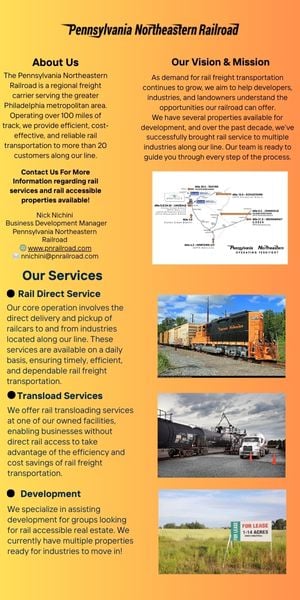See Spot the Construction Robot Run, Climb, Scan, and More

The coronavirus pandemic could push contractors to consider technological solutions to labor issues.
The coronavirus pandemic’s impact on construction appears to be mixed. On one hand, many projects have ground to a halt during the economic slowdown. On the other hand, most states have deemed construction an “essential” activity and allowed it to continue amid “stay at home” or “shelter in place” orders.

Boston Dynamics’ Spot robot is 33 inches tall, weighs about 60 pounds and can move at a top speed of about 3.5 miles per hour. Trey Barrineau
Beyond that, construction workers who are sickened by COVID-19 could be out of work for several weeks, which would deplete already-thin labor forces. And many contractors might keep even healthy workers away from jobsites out of an excess of caution.
In an industry that was struggling with labor shortages before the coronavirus pandemic hit, technological solutions such as robotics might begin to look more appealing in this uncertain time. A promising new construction robot, Boston Dynamics’ Spot, demonstrated the potential for this technology during a recent event at HITT Contracting’s Co|Lab construction research facility in Falls Church, Virginia.
The Breed Standard
Spot is a 33-inch-tall, four-legged robot that, true to its name, does indeed resemble a mechanical dog. It weighs about 60 pounds and can move in multiple directions, climb stairs and avoid obstacles. Spot’s top speed is around 3.5 miles per hour, and it can carry about 30 pounds. Spot can operate for 90 minutes on a swappable battery that takes about 45 minutes to recharge.
The robot has an array of sensors and cameras that allow it to perceive its surroundings in 360 degrees. It is operated remotely with video-game-style joystick controls, but it can also work semi-autonomously on pre-programmed “missions.”
“This is one of the first commercially viable robots for construction,” said Kipp Ivey, key accounts manager for building information modeling (BIM) with Faro, a company that specializes in 3-D measurement and imaging. “Spot is a technologically elegant solution. It’s intuitive. It’s very easy to use.”
For the Co|Lab demonstration, Spot was fitted with image-capturing technology. While data capture might represent Spot’s initial deployment in construction, Ivey said the best use of the robot could be in places that are unsafe for humans.
“What immediately comes to mind in construction is hazardous conditions,” he said. “Maybe it’s something where you don’t want to HazMat up, throw on your booties and send somebody in so they can do 10 minutes of work and come back out. First of all, that’s a labor function that’s highly costly to monitor in a confined space. Secondly, it’s dangerous. I would rather lose a robot than lose a person.”
‘An Absolute Necessity’
According to Ivey, Spot’s ease of use could help attract workers to the construction industry.
“Young people are not coming into the trades,” he said. “Today, I think the concept of robotics and the gamification of construction through robotics and other technology is how we’re going to attract kids who are playing ‘Call of Duty’ out of their basements.”
Prior to the coronavirus pandemic, the demand for labor in construction had been strong, said Anthony Marchio, an enterprise account executive with OpenSpace, a company that uses artificial intelligence to create 360-degree images of construction sites.
“For every one person being hired in construction, we’re losing two to three people to retirement,” he said. “So we’re absolutely not worried about robots taking jobs. There’s a labor shortage. Robots will be an absolute necessity if we’re going to keep pace with demand.”
How Much is That Doggie?
While some forward-looking contractors might want to add Spot to their equipment inventory, the robot is not currently for sale. Instead, Boston Dynamics leases it.
“Our general guidance is that the total cost of the lease will be less than the price of a car, but that may vary depending on the number of Spots leased and how long the customer will be leasing the robot,” a spokesperson for Boston Dynamics said via e-mail.
While Ivey said he’s not sure how many Spots are currently deployed on construction sites, he did say that Tesla is using “two or three” at its factories.
“There aren’t a ton out there right now,” he said.
However, Ivey believes that could change as the construction industry begins to embrace the advantages of robotics.
“I think we’re on the precipice of one of the most exciting things I’ve seen in a number of years in the construction space,” he said. “I believe this technology can save jobs. Buildings are not getting cheaper, but people want to pay less for them. How do we maintain productivity and profitability and create a great product? The only way to do that is through technology.”
Finally, products like Spot can help ease longstanding fears of machines replacing human workers, said Sophia Zelov, industry engagement manager for AEC with Autodesk Technology Centers.
“The usability and accessibility of something like Spot is really enticing because it’s breaking down those barriers of human innateness to be fearful of something like this,” she said.
Trey Barrineau is the managing editor of Development magazine.
Say Hello to HandleBoston Robotics also makes a robot that can work in logistics facilities, which have been moving much greater volumes of material during the coronavirus crisis. Handle is more than six feet tall and moves around on two wheels at speeds up to about nine miles an hour. Its two robotic arms can lift up to 100 pounds. Handle can travel about 15 miles on a single battery charge. |







